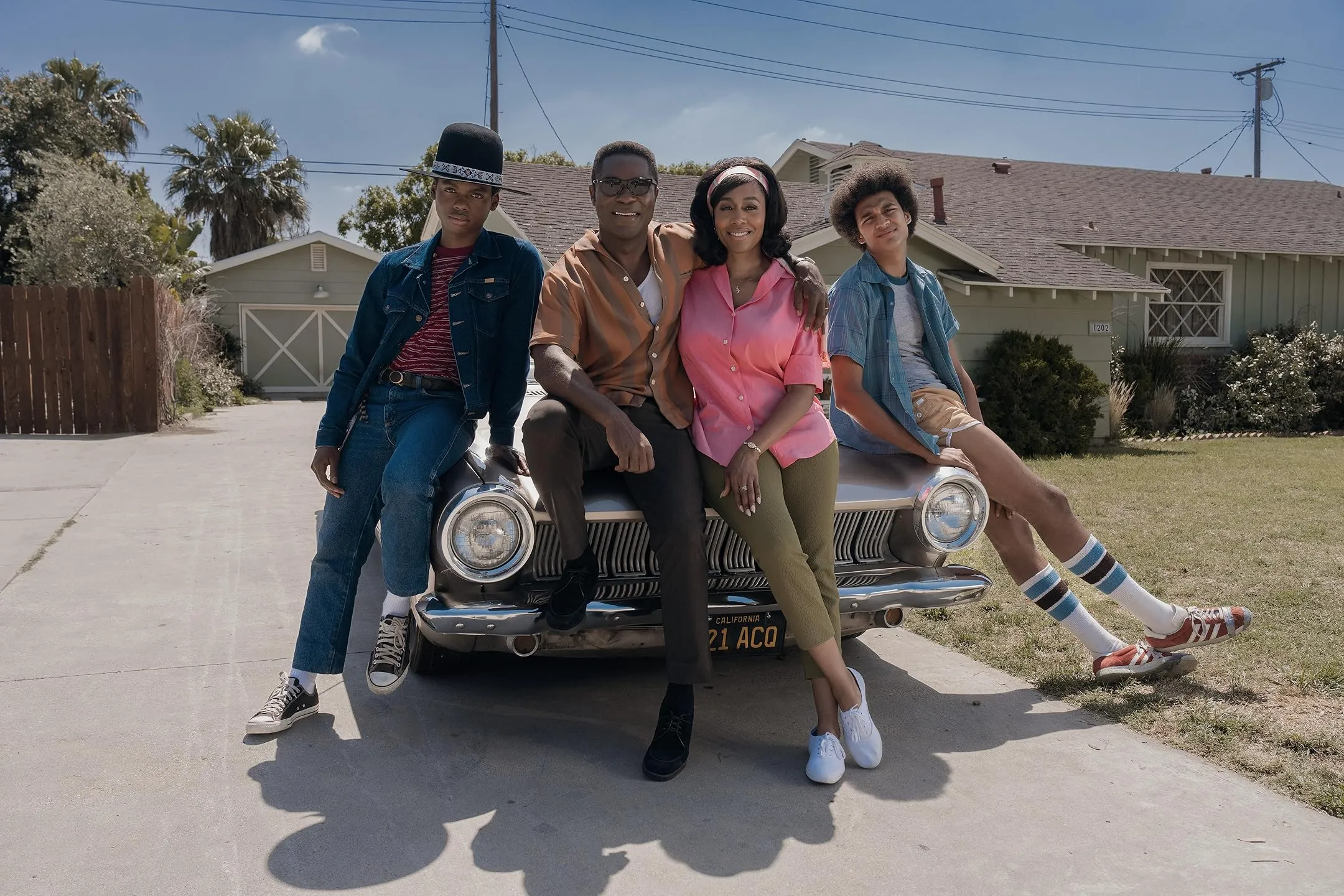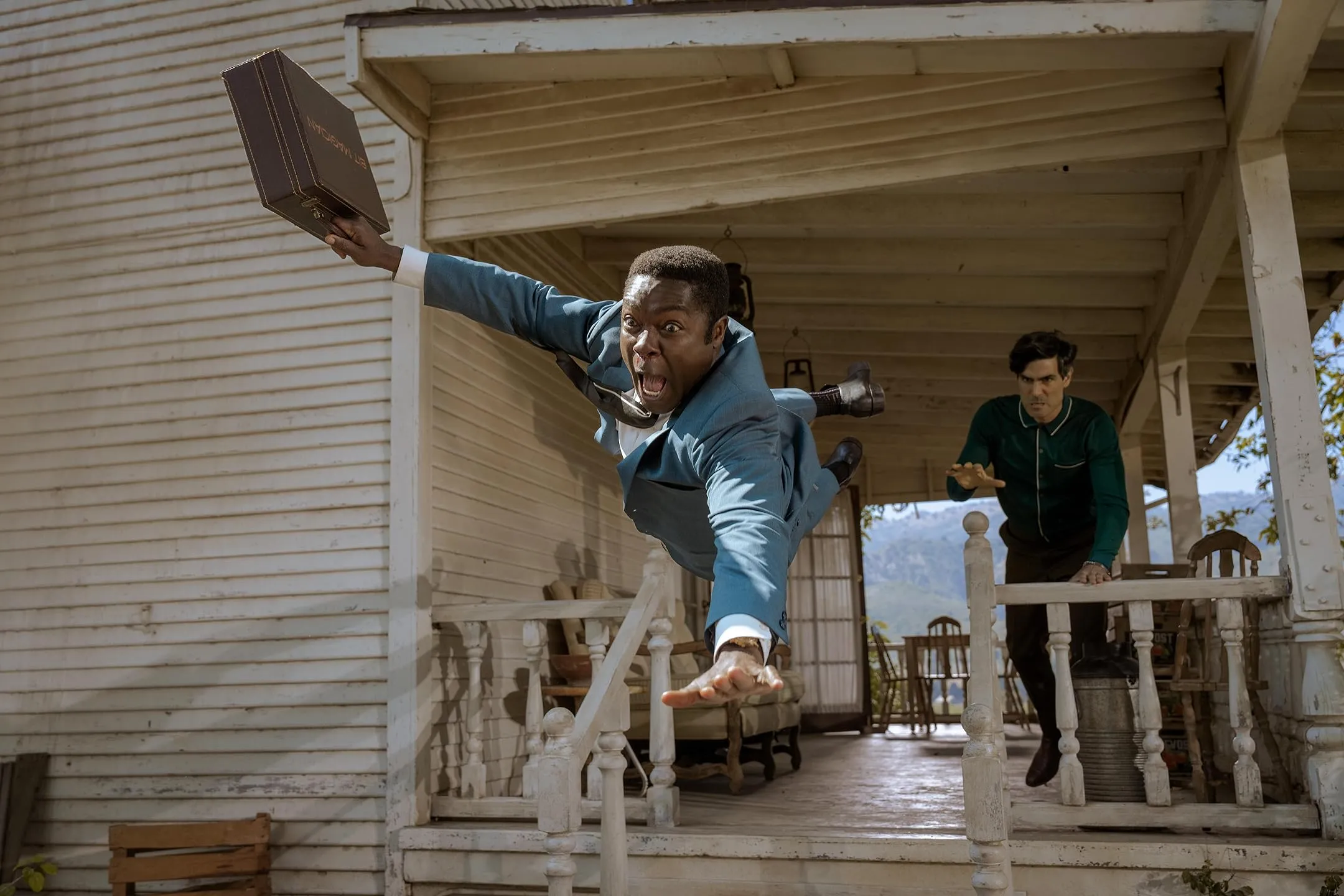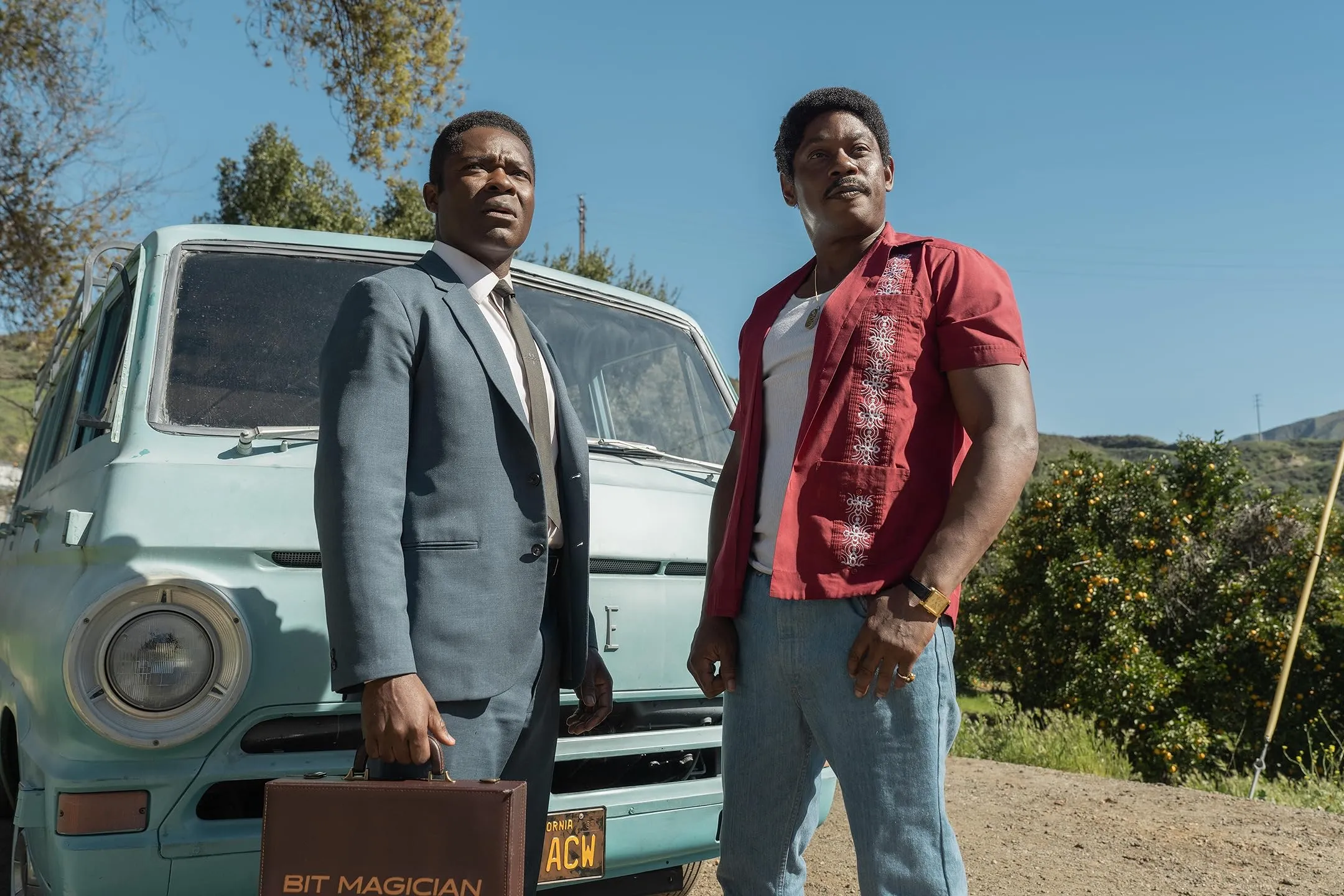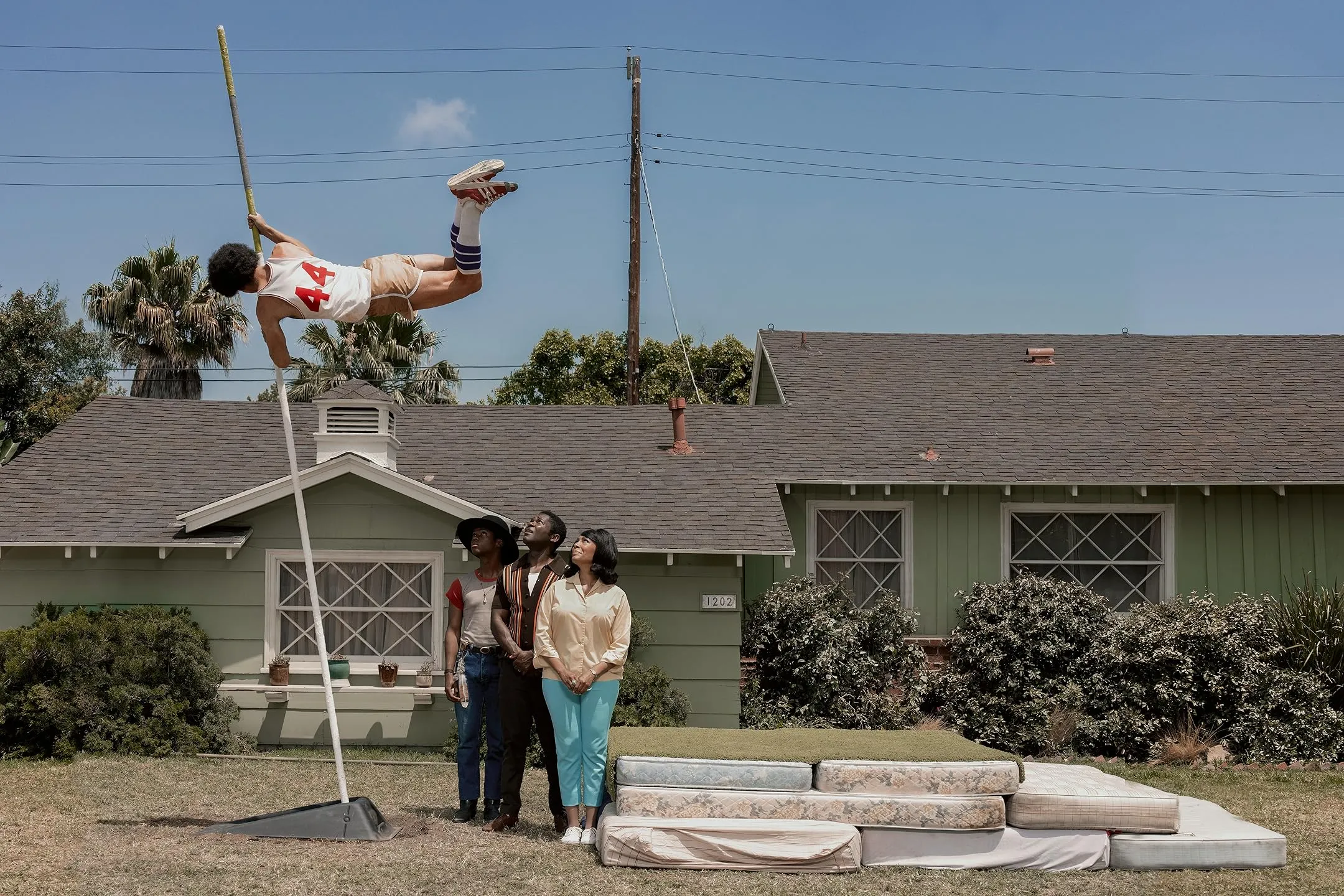Government Cheese introduces us to Hampton Chambers, a man emerging into freedom from a life marred by crime and marked by extraordinary ambition. Set against the backdrop of late‑1960s San Fernando Valley—a period where social change and counterculture stirred deep currents—this series offers a richly textured stage for a story that weaves personal redemption with unexpected absurdity.
Hampton, having served time for lesser transgressions, returns to a family transformed by his absence and driven by its own dreams. His aspirations, which include the quirky invention of a self-sharpening drill, are met with a reality in which familial bonds and cultural expectations are continuously renegotiated.
The narrative carries hints of surreal humor interspersed with poignant family dynamics, channeling energy reminiscent of a parallel cinematic tradition found in both globally acclaimed auteurs and the spirited experimentation of modern Bollywood parallel cinema.
The series crafts its visual storytelling with a retro aesthetic that records the energy of a pivotal era—a time of artistic risk and personal reinvention. In this series, symbolic images and unconventional editing styles serve as a dialogue between past influences and modern sensibilities, inviting a diverse audience to rethink established norms in storytelling.
Mapping Hampton’s Passage: A Study in Narrative Shifts
Hampton’s tale unfolds with a stark transition from confinement to a world brimming with both promise and hazard. The series opens with his release from prison, marking a fresh start after years marked by errors and limited ambition. His immediate goal revolves around an inventive contraption—a drill that refines itself—meant to set his future on a new course. The urgency of repaying a debt to a notorious criminal group propels the storyline into territory where personal reinvention collides with the remnants of an old life.
Family relationships form a critical core of the narrative. Hampton’s homecoming is far from a welcome return; his wife, Astoria, expresses sharp discontent at his unexpected arrival, while his sons show contrasting responses. One son, known for his sharp mind and gentle nature, contrasts with the more impassioned, rebellious younger sibling. The evolving connections among family members reveal the effects of time spent apart, highlighting an internal struggle to rebuild bonds that have weathered years of absence and disappointment.
The series introduces offbeat twists that elevate its narrative texture. Biblical imagery, such as allusions to a well-known ancient text, and surreal incidents—like the audacious plan involving a local house of worship—infuse the plot with a sense of magical realism.
These moments remind one of experimental efforts in Indian parallel cinema, where unconventional storytelling harmonizes with visual symbolism. For example, directors from the parallel cinema movement often employ potent metaphors in everyday scenarios, a method reflected in this series’ willingness to mix the bizarre with the ordinary.
The choice of a half‑hour format gives the plot a brisk pace, enabling swift transitions between dramatic and absurd, albeit sometimes leaving key elements less explored. Threads are introduced that hint at future developments, inviting viewers to consider wider implications while the narrative maintains a compact, episodic rhythm.
Spotlight on Character Depth and Performances
Hampton Chambers stands at the heart of the series, brought to life by David Oyelowo with a mix of warmth and hubris. His portrayal captures both the optimism of a man eager to rebuild and the weight of a shadowed past. Hampton moves between moments of sincere hope and flashes of impracticality, his inventive ambition symbolized by a drill that appears as a promise of redemption. This character’s journey is a striking study of contrasts: he exudes a friendly magnetism while being defined by errors that complicate his return to normalcy.
Astoria, Hampton’s wife, provides a firm counterbalance to his restless energy. Portrayed by Simone Missick, she embodies the pragmatic force that anchors the family, reacting to Hampton’s reckless plans with frustration and a quiet defiance. Her expressions of discontent and subtle acts of resistance against the era’s expectations serve as a mirror reflecting the challenges faced by women in a time of social constraints.
The youthful energy within the family is captured through the distinct portrayals of Einstein and Harrison. One son, marked by a gentle intellect and eccentric mannerisms, contrasts with the other, whose passion borders on a fervor that occasionally oversimplifies his rebellious nature. The divergence in their responses to Hampton’s return offers a glimpse into the shifting dynamics between generations, each reacting in their own manner to the past and present.
Supporting roles add layers to this extensive character study. Figures like Bootsy, whose humorous interventions shake up the narrative, infuse the story with unexpected twists, drawing attention to the less predictable side of Hampton’s life. This group of performers collectively shapes a canvas of on-screen interaction that marries seriousness with moments of unexpected levity, creating an engaging picture for audiences around the world.
Painted Reality: The Visual Lexicon of Government Cheese
Paul Hunter’s directorial signature is evident throughout the series, reflecting his background in music videos with scenes that burst with clear, sharp visuals and playful energy. His guidance transforms everyday moments into vibrant compositions that capture the series’ offbeat tone. The use of experimental angles and rigid framing recalls the visual quirks found in acclaimed global cinema, creating images that stand out through their careful construction and crisp focus.
The camera work pushes scenes into a realm where staged precision meets spontaneous flair. Shots are composed with eye-catching balance, using near-square framing and bold angles to add a fresh quality to familiar settings. This careful manipulation of perspective contributes to an aesthetic that is both stylish and unorthodox.
Set design revives the essence of 1960s suburbia with remarkable detail. The recreation of the period features elements like crisp tailored suits contrasted with hints of counterculture attire, which enriches the visual narrative with layers of historical reference. Quirky commercials and faux public service segments intersperse the episodes, injecting moments that mix humor and satire. These segments serve as visual breaks that echo experimental techniques from select strands of Indian parallel cinema known for their symbolic imagery.
Costuming plays an essential role in reinforcing the characters’ identities, reflecting the fashion of the era while adding a touch of surrealism. The thoughtful choice of color schemes and textures in the costumes harmonizes with the set design, creating a cohesive visual theme that delights the viewer’s senses throughout every scene.
Symbols of Change: Surreal Tones and Cultural Reflections
The narrative employs striking surreal techniques that mix the ordinary rhythm of suburban existence with unexpected twists of fate. Everyday domestic scenes merge with surprising moments that render the familiar unpredictable. For instance, the series presents an everyday neighborhood disrupted by absurd events—a planned heist at a local house of worship or offbeat biblical references that bring to mind the mystique of ancient texts. These choices serve to question the notion of destiny and highlight human fallibility in times of change.
Biblical cues, such as those drawn from a renowned ancient manuscript, are offered as symbols that mark cycles of sin and redemption. They invite viewers to reflect on the balance between punishment and forgiveness, themes that resonate with classic narratives found in certain strands of Indian parallel cinema. This style, noted for its focus on cultural depth and narrative symbolism, enriches the series by linking personal dilemmas with larger metaphors of life’s repetition and renewal.
The return of Hampton to his family becomes a visual and thematic touchstone. His unexpected homecoming stirs varied reactions among family members, each representing a facet of the generational divide. The father’s clash with modern expectations is mirrored in his children’s differing outlooks, symbolizing the shifting dynamics of society during a period marked by cultural debate.
Recurring artifacts such as the self-sharpening drill and the eponymous item of daily sustenance emerge as emblems of unfulfilled promise. They stand as visual markers of both innovation and the challenges of transforming modest means into lasting achievements.
Light and Shade: The Comic Balance in Government Cheese
The series showcases humor that softens its serious themes while elevating the storytelling without tipping into excess sentimentality. Moments of playful dialogue, reminiscent of the clever repartee found in selective Bollywood narratives, counterbalance dramatic family conflicts. Witty quips and absurd scenarios are interspersed with more somber beats, making it possible for audiences to appreciate a touching tale without losing the spark of levity.
Scenes featuring whimsical commercials and unconventional set designs offer a refreshing pause amid emotionally charged sequences. These visual bits recall techniques used in Indian parallel cinema where imaginative storytelling creates spaces for lighthearted expression even during tense narrative moments. The juxtaposition of a chaotic homecoming with unexpected humorous occurrences—such as a bizarre public service spoof—creates tension relief that underscores interpersonal struggles.
This interplay of laughter and serious reflection gives the series a texture that resonates with viewers worldwide. It manages to make tender family dynamics appear more relatable and grounded, even when wrapped in surreal, often unpredictable humor. The pace is carefully managed so that comedic elements emerge naturally, complementing the emotional arcs of the characters without overshadowing their personal quests.
Mapping Tomorrow’s Vision: The Road Ahead for Government Cheese
The series presents a rich narrative centered on a man determined to reinvent himself, set against the backdrop of unpredictable family dynamics and strange circumstances. Hampton’s quest for personal transformation, coupled with the challenges arising from his troubled past and unfulfilled promises, creates a layered story that examines the nature of ambition and human fallibility. The depiction of a family struggling to redefine itself after years of separation offers a mirror to wider social shifts experienced during the late‑60s, a period marked by rapid cultural changes.
The striking visuals and playful humor invite viewers to appreciate the artistry of each carefully constructed scene. The creative use of surreal imagery, unexpected narrative turns, and symbolic artifacts—such as the recurring self-sharpening drill—demonstrates a sophisticated interplay between artistic innovation and traditional storytelling. These elements share a kinship with experimental methods seen in select strands of Indian parallel cinema, where narrative inventiveness and formal experimentation elevate the medium.
Meanwhile, the narrative leaves open several promising threads. Unresolved character arcs and hints of a broader mythos suggest that future installments may explore these avenues further, offering a canvas for evolving storylines and refined cinematic artistry that could define the series in coming seasons.
The Review
Government Cheese Season 1
Government Cheese offers a daring experiment marked by imaginative visuals, memorable characters, and layers of cultural allegory. Its creative interplay of humor and drama produces an engaging narrative, making the show a standout entry with room for future growth. Certain narrative threads remain open, inviting additional exploration in upcoming installments.
PROS
- Creative visuals and stylish production
- Bold use of surreal narrative elements
- Memorable and multi-dimensional characters
- Skillful balance between humor and drama
- Engaging musical cues and innovative editing
CONS
- Inconsistent pacing in some episodes
- Several unresolved plotlines
- Occasional overreliance on surreal imagery





















































